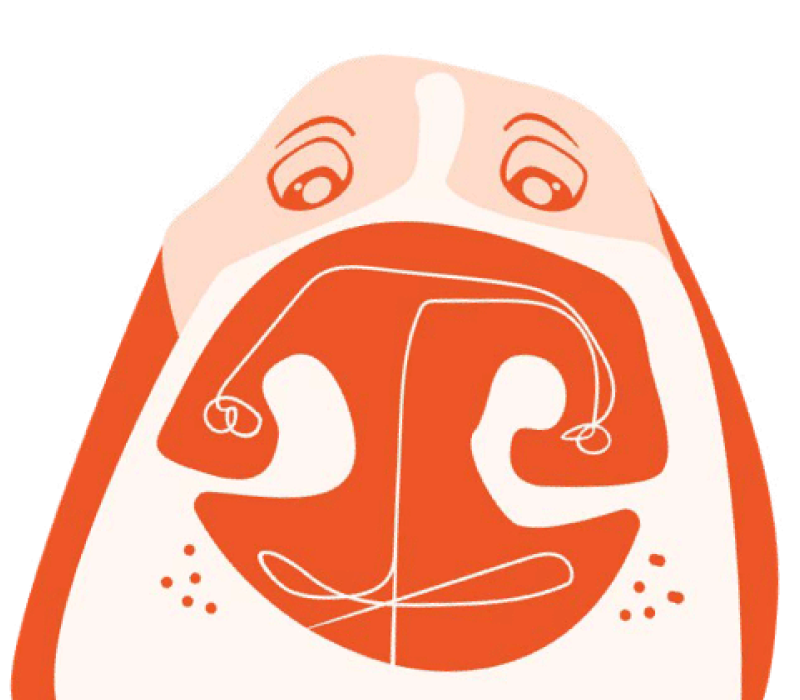Your cart is empty. Let's fix that!


Most dog owners are able to read their pooch’s body language when they are awake—a wagging tail means happiness and excitement, and ears pulled back translates to anxiety or fear. But did you know that you can also read your dog’s body language when they are asleep?
The position your pup sleeps in can reveal what they are thinking and feeling just as much as tail and ear movements when they are awake.
Ready to learn what your dog is telling you by the position he picks to sleep in? This article is for you!
1. Curled up
Curling up into a ball is the most common position for dogs to sleep in. It’s not only comfortable and cozy for our dogs—it’s instinctual.
In the wild, dogs and wolves curl up to sleep in order to conserve body heat on cold nights. The position also serves a defensive function—it protects their vital organs from exposure in case of attack.
So while your domestic dog doesn’t need to worry about freezing temperatures or nocturnal predators, the instinct to curl up at bedtime is still there.
If your dog has a crazy nighttime ritual that includes walking around in circles and trying to dig at his bed before laying down on it, these behaviors are also the result of an instinctual impulse.
Digging at the ground serves multiple functions in the wild. First, creating a small hole to lie in helps to keep wild dogs cool in the summer and warm in the winter. Secondly, it marks territory. Dogs have scent glands on their paw pads and digging and pawing at the ground rubs some of their scent on the area.
Walking in circles also gives them one last opportunity to check in all directions for predators or anything that would be unsafe to sleep around.
If your dog at home circles, digs, and curls up for the night, this does not necessarily mean he’s checking out the bedroom for potential dangers. Oftentimes, this behavior is purely instinctual, and simply means that your pup is in touch with his ancestry!
2. The superman
There are two main reasons why a dog will choose the superman (on their stomach) for their afternoon nap.
1. They are a puppy
This position is the easiest to get up and down from, and energetic puppies who have just exhausted themselves with an exciting bout of play might not have the time to get into a more comfortable position before passing out.
2. They are uncomfortable
Adult dogs who sleep on their stomachs might be uneasy in some way about their surroundings. They are making sure that their vital organs are not exposed, and also making it easy for themselves to get up quickly in case of sudden changes in their surroundings.
Help your dog be at ease by providing a quiet, dark, comfortable area for them to rest.
3. Belly up
It is quite a sight to witness a dog passed out on her back, with all four paws up in the air. Dogs who regularly sleep on their backs are usually affectionate and trusting. This is the most vulnerable position for them to sleep in; it exposes all of their organs, and it is not easy or fast to stand up from. Dogs who sleep with their bellies to the sky feel comfortable and safe in their surroundings.
However, be on the lookout for dogs who don’t usually sleep in this position suddenly start sleeping this way—they might be overheating.
Dogs in this position may be trying to cool themselves down. They have thinner hair on their bellies, making it easier for heat to leave the skin. Additionally, dogs’ paw pads are one of the only places on their bodies that they can sweat. If your dog throws her feet in the air to sleep—while it certainly looks amusing—she might be trying to cool off.
If you own a hypoallergenic dog, you should watch out for this kind of behavioral change in the summer. Hypoallergenic breeds are great for people with allergies to dander. However, since these dogs do not shed, they require regular grooming to keep their fur from getting too long.
Imagine wearing a thick fur coat in the middle of summer—it doesn’t sound very fun, and this is what your dog goes through when you neglect their haircuts!
If you can’t remember the last time you brought your poodle to the groomer and he suddenly decides only to nap on his back, this likely is his way of telling you that he needs a haircut!
Summary
Even though dogs and humans don’t naturally speak the same language, we find ways to communicate nevertheless! Now, you know what 3 of the most common sleeping positions might be saying about your dog.